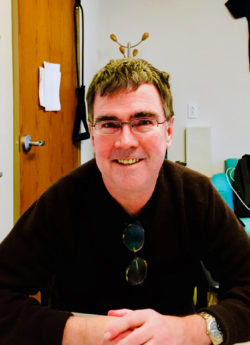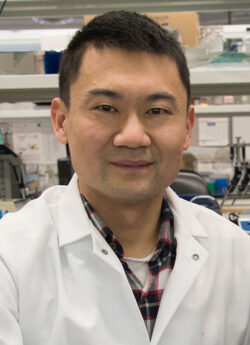Scientific legacy sheds light on cell identity
Late scientist’s zebrafish continue to answer questions about genetics, cell fate
 Washington University School of Medicine
Washington University School of MedicineA study from Washington University School of Medicine in St. Louis reveals key details in how zebrafish regrow a severed tail fin. The research also demonstrates how a late scientist's legacy continues to contribute to the field of regenerative medicine.
Zebrafish are adept at regrowing tail fins, but how they so precisely regenerate a completely new fin remains unknown. Understanding this could help advance the field of regenerative medicine, which aims to develop methods to regenerate diseased or injured tissues and organs.
A study from Washington University School of Medicine in St. Louis reveals how the cells that remain from a severed limb remember their original identity and fully reconstitute the lost fin. This memory of cellular identity consists of chemical modifications on DNA that control how the genome is regulated.
The study, available online in the journal Genome Biology, suggests that specific patterns of chemical markers attached to the DNA — called methyl groups — allow the cells to remember what they are and regenerate a complete fin.

Beyond new insight into limb regeneration, the paper also highlights the scientific legacy of the late Stephen L. Johnson, PhD, who was a professor of genetics at Washington University and one of the world’s leading zebrafish geneticists, according to Ting Wang, PhD, the Sanford C. and Karen P. Loewentheil Distinguished Professor of Medicine. Wang, introduced by Johnson to the power of using zebrafish genetics to understand cell fate determination, led the current study.
Johnson, who had long struggled with severe rheumatoid arthritis, died in 2017. Wang discussed the new research and Johnson’s scientific legacy, which led the team to list Johnson as the study’s senior author more than two years after his death.
Who was Stephen Johnson and what did he study?

Steve was a great mentor, a great friend and one of the greatest geneticists I have ever known. He was a pioneer in zebrafish genomics, and made significant contributions to the understanding of cell fate by using zebrafish pigment cell development and tail fin regeneration as models. If you amputate a zebrafish tail fin, it grows back to perfection. Even in humans, very young children can regrow, for example, the tip of a finger. But we lose this capacity as we age, which suggests there is some regeneration program in people that becomes dormant relatively early in life but might have the potential to be reactivated.
What did his research contribute to the field of regenerative medicine?
Steve introduced genetics into the field of regenerative medicine in his seminal 1995 Genetics paper. The remarkable thing about zebrafish regeneration that Steve described is that it’s not dependent on stem cells, as we might expect. The cells that are left over at the stump of the fin retain their identities and revert back to a proliferate state that lets them divide and grow and reconstitute the fin. Somehow, these regenerating cells remember their cell-type origin to reestablish proper tail fin structure and identity during regeneration. Interestingly, a bone cell will only regrow bone cells. A pigment cell will only regrow pigment cells. Steve used a very elegant genetic approach to figure this out. And this cell lineage restriction — the idea that a bone cell can’t revert to an earlier state and become a pigment cell, for example — really intrigued me.
I study cell fate and how cell identity is maintained. We want to figure out what helps these cells remember what they are. The phenomenon of cell identity restriction during regeneration is evolutionarily conserved. It is conserved in salamander limb regeneration, and mouse digit tip regeneration This has a lot of implications for understanding disease. For example, cancer is a cell fate problem. A cancer cell is a confused cell type — it doesn’t remember what it is.
How did his work inform the new study?
Using Steve’s fish that my lab inherited, we can ask a lot of questions about cell fate and how it is determined and maintained. And in this new paper, our work suggests that DNA methylation patterns — or where these methyl groups are attached to the DNA — could provide a way for cells to remember what they are. Despite the other massive epigenetic and gene expression changes that these cells undergo as they reconstitute the fin, what remains constant is DNA methylation patterns. Once a cell decides, “I am a bone cell,” methylation locks that in. These findings surprised us because everything else about this regeneration process is highly dynamic.
The concept of a cell being restricted to one lineage is a big part of Steve’s legacy. My lab is committed to carrying on his legacy, to keeping his fish alive and continuing to use them to study cell fate and help understand tissue regeneration. If we understand how cell fate is maintained, we could develop strategies to change it in ways that are beneficial. For example, to direct the regeneration of some important tissues or to revert a cancer cell back toward its original identity so it is no longer cancerous. These are very basic questions in the biological sciences, but we believe they ultimately will prove important for human health.






